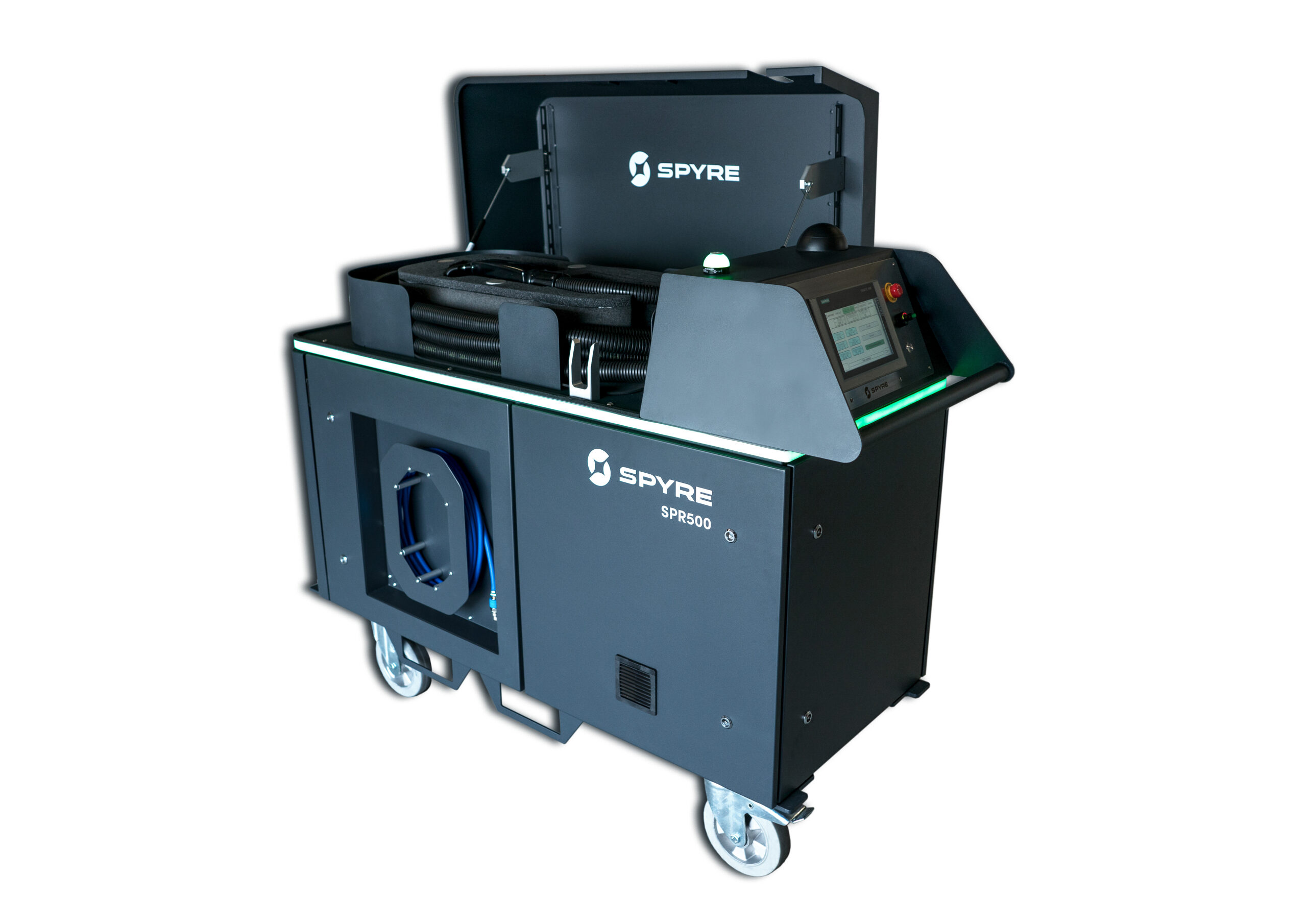Option to monitor parameters and device status in real-time.
Cleaning lasers with intuitive manual control and adjustable parameters for cleaning impurities from various surfaces.
SPYRE cleaning lasers have a unified chassis specially designed and manufactured to meet the needs of industrial production. We use components of the highest standard, and pay attention to the quality of manufacturing, machine safety, and ergonomics.
We can connect to devices and remotely diagnose fault conditions, with the possibility to change settings. All supplied devices collect factory data.
Standard Models
Cleaning before and after welding, removing layers of oxidised aluminium and steel, and surface activation before gluing.
Cleaning plastic moulds, surface disinfection in the food processing and medical industry.
Preparation of surfaces before lacquering and cataphoretic coating, removing paint and substrates, and the elimination of carbonised layers.
Suitable for application in shipbuilding, repairing trains and road track units, and decoating thick layers.
Non-standard model. For more information, please contact LASCAM systems s.r.o.
SPYRE – Specifications
Above-standard mechanical resistance and robustness enable frequent handling and application in busy metal production plants, engineering plants, foundries, and other locations with demanding conditions for standard machines.
Uses standard RFID technology for distinguishing operator rights. Replacing the chip enables the rapid change of machine settings according to predefined conditions, without the need to enter passwords.
To make it possible for process optics to work in non-standard conditions, the device’s essential components and the process head are actively cooled to the required temperature for a stable process.
Thanks to controlled heating after starting the machine, there is no need for operator control. The machine can be started in different environments without having to check the chiller or peripherals.
The laser is equipped with outputs for connection to an external safety circuit, a warning signal, and offers the “ONEMAN work” option to control the activity of the operator and ensure workplace safety.
By using high-quality optical components, we deliver a laser beam to the surface of the material with minimal power losses. As a result, the efficiency and stability of the laser cleaning process is identical across the entire width of the cleaning line.
The patented sweep of the laser beam eliminates over-burning at the edges of the cleaning line – creating a homogeneous cleaning effect on the material – and eliminating the need for multiple passes.
The possibility to exchange optics allows you to alter the efficiency of the beam and the cleaning line according to the type of material.
A library of parameters for individual materials can be created, changed, and saved directly onto the device’s control panel. This standard SPYRE feature allows you to store up previous experience for future work.
No external software needs to be installed to control the device or adjust its parameters or properties, so there is no necessity to purchase and maintain licenses.
A built-in air gun, integrated directly into the SPYRE, is available for working efficiently between individual cleans.
Device is partially protected against the ingress of dust and harmful deposits. Protected against splashing of water up to 60 degrees from the vertical.
Typical Applications
The basic principle of laser decoating is the partial removal of thin vapour-deposited, sputtered, or varnished layers, with thickness measure in units of μm, to preserve the visual and functional properties of the base material. This process does away with masking individual parts and so eliminates maintaining jigs and simple changes to the pattern that is removed from the base material. Because of the frequent use of the process on visible or exposed surfaces, the process must meet high requirements for accuracy and homogeneity of the result.
A commonly used base material is polymer, from which metal layers – such as aluminium, iron, chromium, or other layers with a polymer or metal base – are removed. We use 10–100 W lasers with a very short and powerful pulse that has minimal impact on the base material, which guarantees a wide possibility of layer thicknesses and types of basic materials.
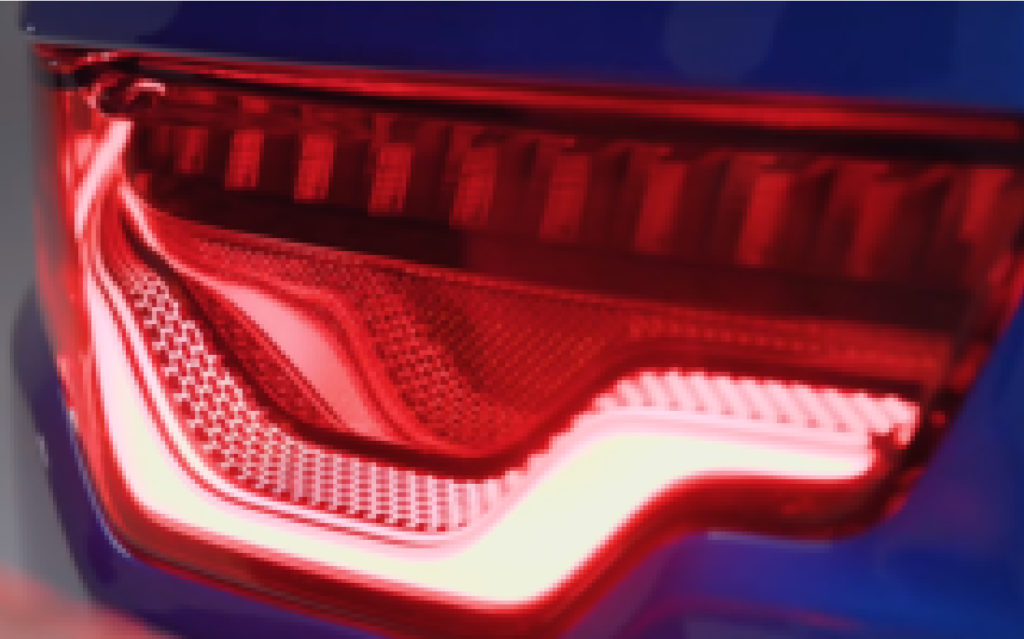
Laser technology is replacing the standard methods of cleaning moulds, such as mechanical and chemical processes. This technology does not generate additional operational costs, or costs for disposing the consumed material.
Using 200–1000 W lasers enables you to remove unequal or inhomogeneous layers, which are created during the everyday use of plastic and rubber moulds. This process combines all the methods mentioned above (sublimation, evaporation, and adhesion) and allows the removal of pressure rust layers (10–50 μm), separator layers, as well as functional contamination (200–600 μm), which contains lubricants mixed with other impurities arising during the process. Under defined conditions, various types of patterns can be cleaned, especially in the rubber industry. Thanks to the minimal influence of the basic material, we do not remove the material from functional surfaces and thus do not disturb the function of the mould.
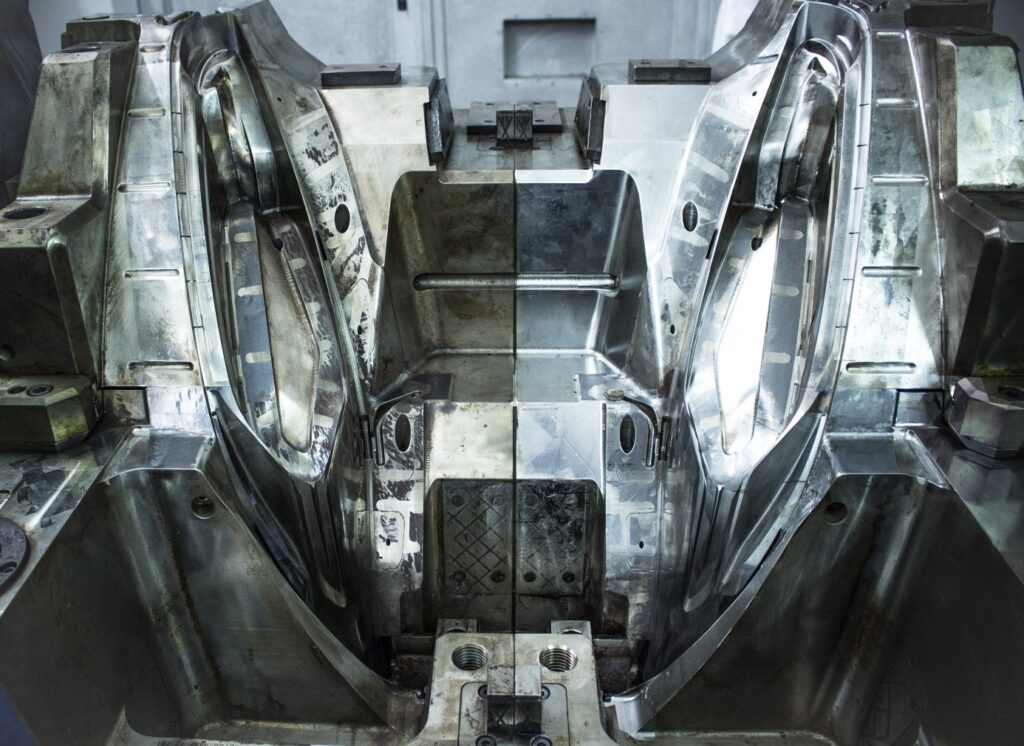
Surface treatment with laser cleaning is widely used to prepare surfaces before subsequent welding or painting. For preparation before welding, the principle of sublimation is used, and the evaporation of basic operating impurities. At 100–1000 W, preparing surfaces for subsequent processes can be done at high speeds. The main difference compared to mechanical/chemical processes is the minimal disruption of the base material, since the natural passivation layer is not removed. Oxidation layers are completely removed by the laser. This significantly extends the time interval between cleaning and the subsequent welding process.
In the case of preparing weld surfaces for subsequent process (forging, painting), the method we use is to break the bond or adhesion between the removed layer and the base material. The thermal oxidation or silicates formed during the cooling of the weld pool can be removed at the power range of 100–500 W.
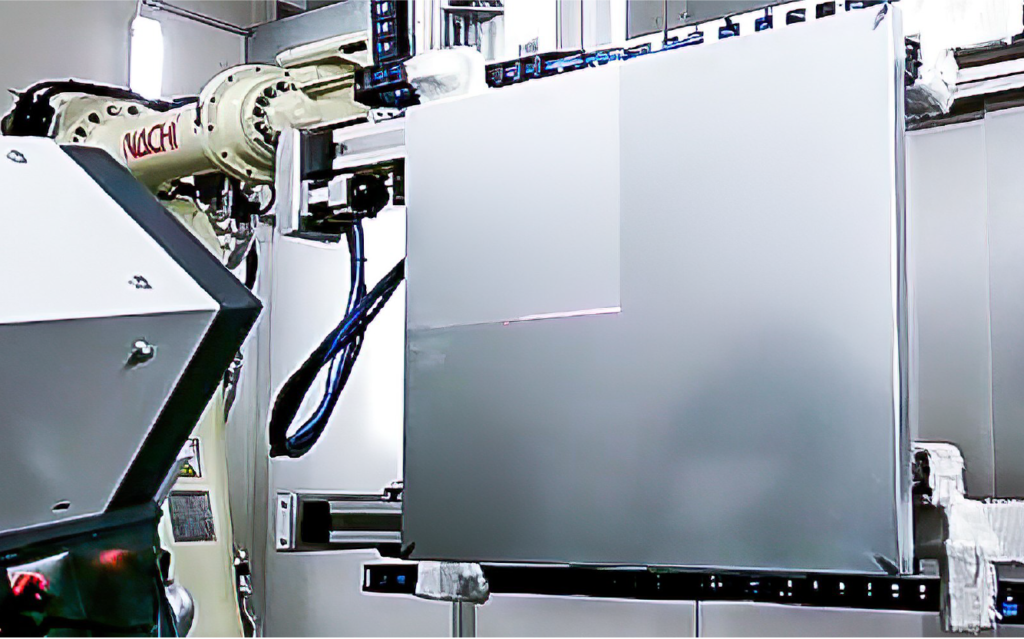
The technology used for removing larger paint layers is fundamentally different from the other technologies described. In this case, the gradual removal of the cleaned layer is preferred, making it possible to clean up to 300 μm in one layer without degrading the base material even with repeated exposure.
For the gradual removal of layers at a high power of 500–3000 W with very short pulses, we use sublimation and evaporation in short reaction times. Thanks to this method there is no degradation of the base material. It subsequently retains its original properties, allowing the removal of non-metallic layers from 500 μm up to units of mm, depending on the number of repetitions. It is an efficient method, especially for the removal of lacquer or other layered paints that would otherwise need to be cleaned chemically or pyrolytically, which are economically and logistically demanding.
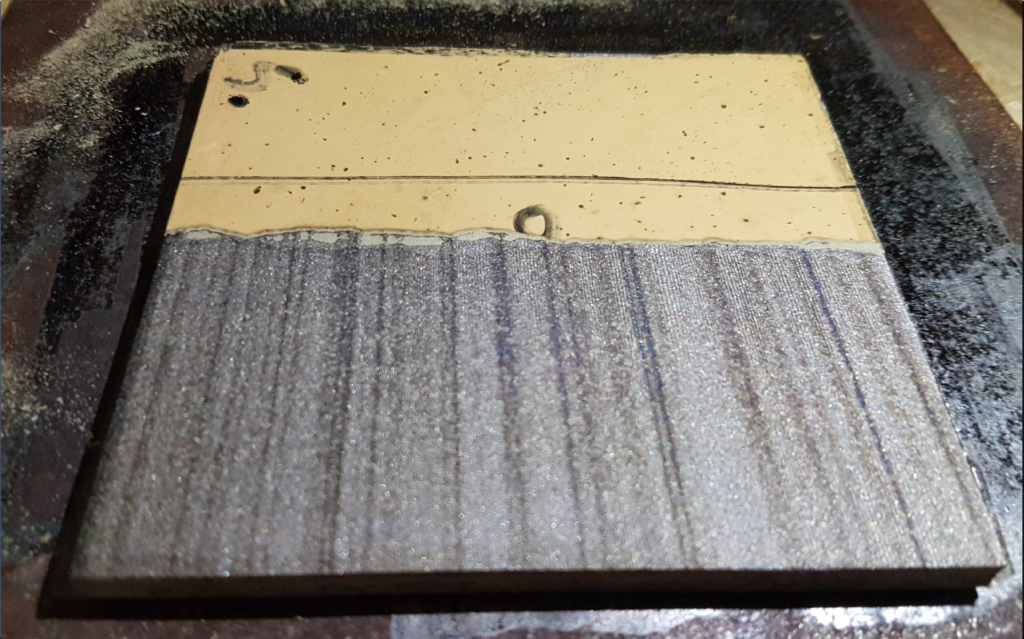
We regard the laser removal of metal layers from the metal base material as a subsequent technological step following laser decoating. Metal layers are gradually removed in separated layers in the required geometry down to the metal base material, as in the case of the LPS method. Each layer is equally removed from the entire surface, and similarly to selective removal (decoating) accuracy is in the tens of μm.
Thanks to the high quality of the beam and laser power (up to 1000 W), we can implement the micromachining process into standard production times. The high power also allows the removal of materials with a higher degree of reflectivity – Al, Au, Cu, and Pt.
Additional Equipment
Extended Delivery Fibre
To improve its range, the optical fibre can be extended up to 18 m.
Balancer
Option to supply a working head balancer for ergonomic cleaning in hard-to-access areas.
Head Wheel Support
To manually clean large areas, we also supply a special construction to fix the focal distance. This significantly smooths user operations and speeds up work.
Industrial Fume Extraction Unit with Filtration
Delivery includes an external fume extraction unit with three filtration levels (including chemical filtration), according to the laser use.
Service Agreement and Smart Glasses
Servicing with guaranteed arrival times or immediate support using smart glasses.

